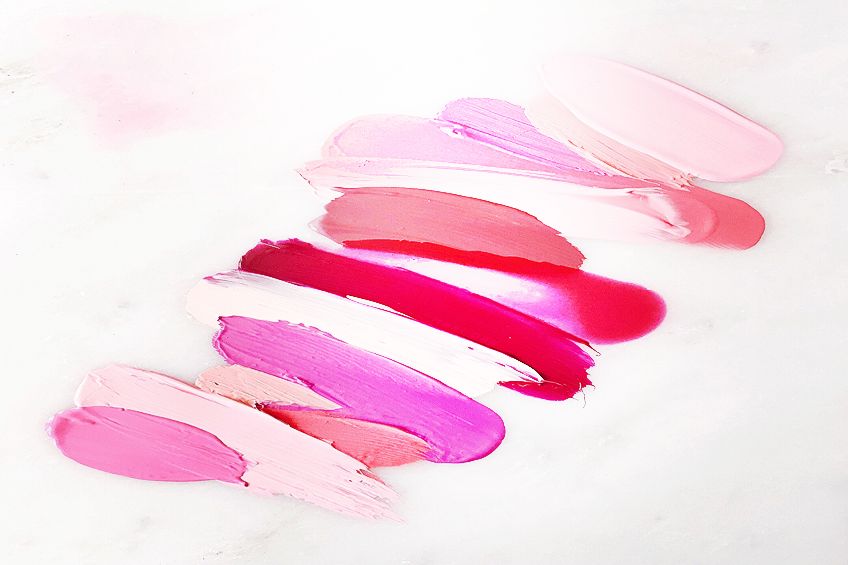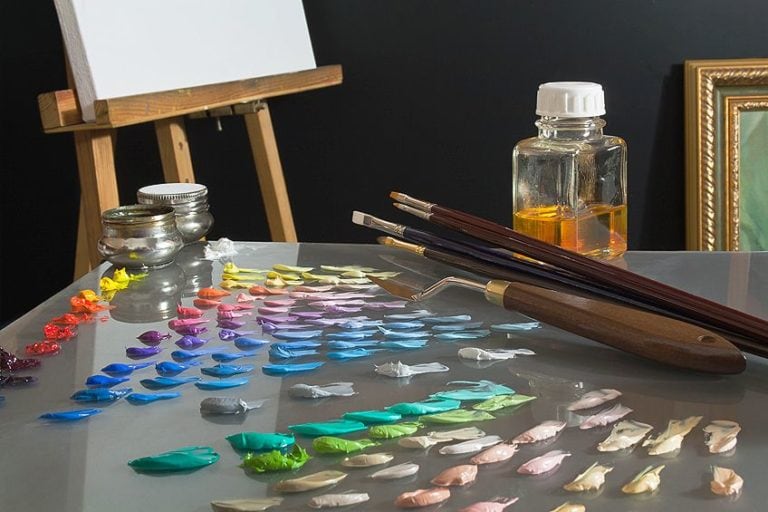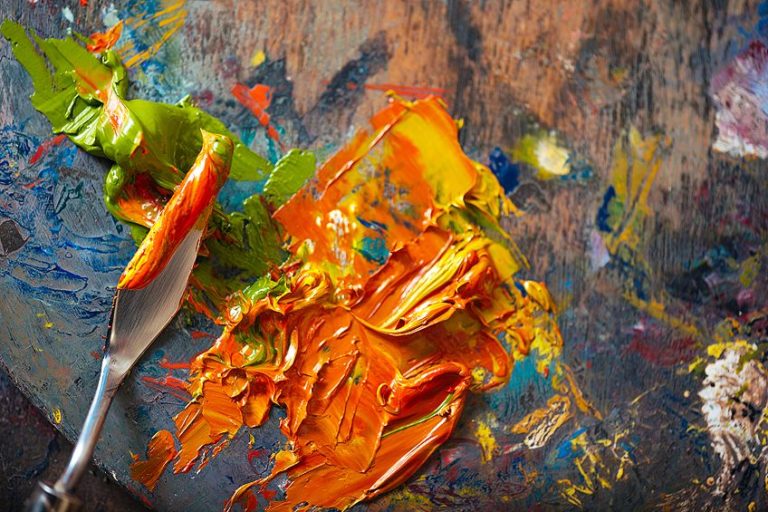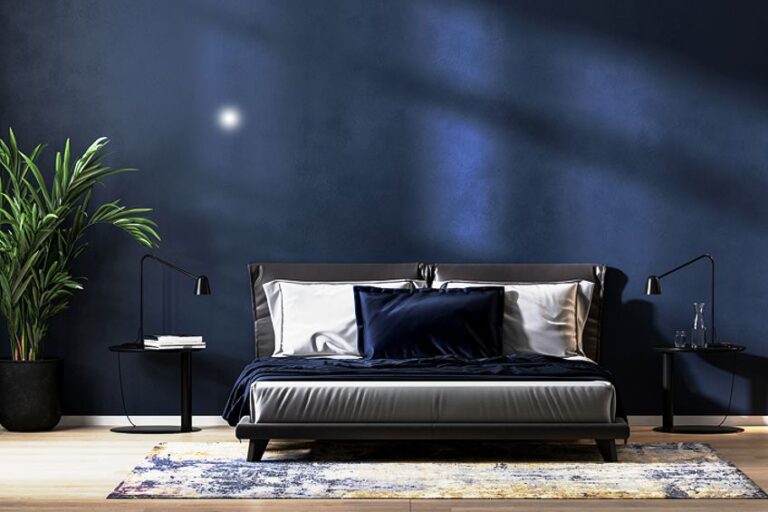What Colors Make Pink? – How to Make Pink Paint in Various Shades
This post may contain affiliate links. We may earn a small commission from purchases made through them, at no additional cost to you.
Pink is a gorgeous and vibrant shade that can be used in your art pieces. Most people are under the impression that pink is a color that is easy to make, but there is such a variety of shades of pink, each with its unique composition. Pink has so many variations to offer, from deep and dark magenta to light peach. This article will assist you in mixing several shades of pink with a step-by-step tutorial.
What Does Pink Mean?
Before we assist in how to make the different shades of pink, we should better understand what is represented by this popular color. Normally, pink is linked to feminine things, often associated with the stereotypical interests of young girls like unicorns, flowers, and princesses. However, there is so much more to the color pink. Pink is also associated with romance, Valentine’s Day, youth, playfulness, and good health. Pink is not just about toys and romance; it is a stunning and bold color that can add a level of vibrancy to any design.
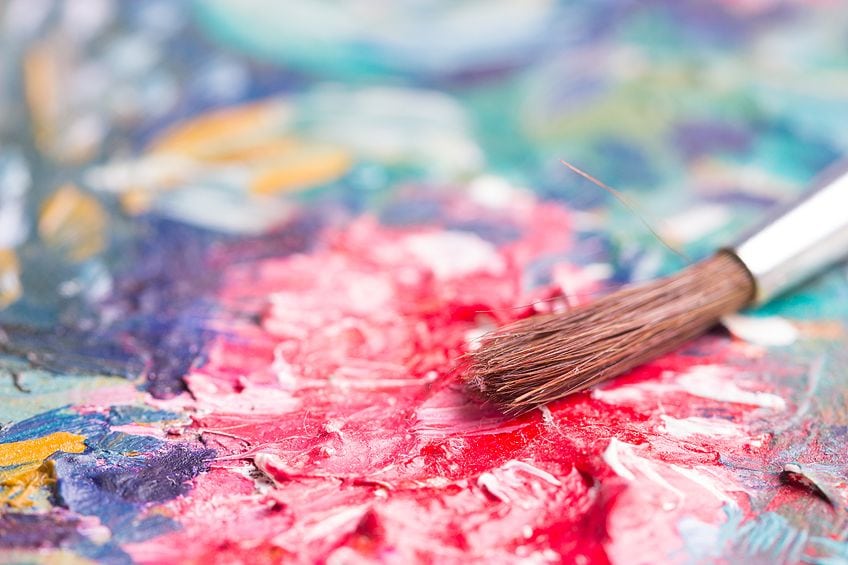
Pink as a Nurturing and Relaxing Color
According to color psychology, pink has an assortment of psychological and emotional components linked to it. The belief is that one’s emotions can be impacted by color when one views them, and the most common emotional effect brought on by the color pink is that of a sense of calm.
Color psychologists also believe that when you are looking at the color pink, you cannot help but feel a little joy, and the color can be linked with feelings of positivity and hope. To add these feelings to your choice of clothing or art piece, you can use an assortment of lighter pink shades.
Pink tends to be seen as a feminine color and is also linked to a sense of nurturing and care, which is likely due to the way in which society views women and girls as compassionate and caring. Regardless of what society feels, there is no denying that a sense of nurturing is imparted by the color pink.
Pink is the color linked with breast cancer awareness and it encourages compassion and feelings of hope.
Pink and Childhood Innocence
Pink’s greatest association is that of young girls and playfulness, from Barbie dolls to a ballerina’s pink tutu, the color pink can bring back magical memories of one’s youth, while conjuring feelings of innocence, freedom, and fun. In fact, the majority of toys manufactured specifically for girls will contain one or more shades of pink. Pink can also create feelings of safety and warmth.
Treats and sweets are also associated with different shades of pink, as a lot of sweet manufacturers use shades of pink in their packaging and confections. From pink lollipops to the bold pink icing used on doughnuts, sweets associated with the color pink seem more delicious and inviting.
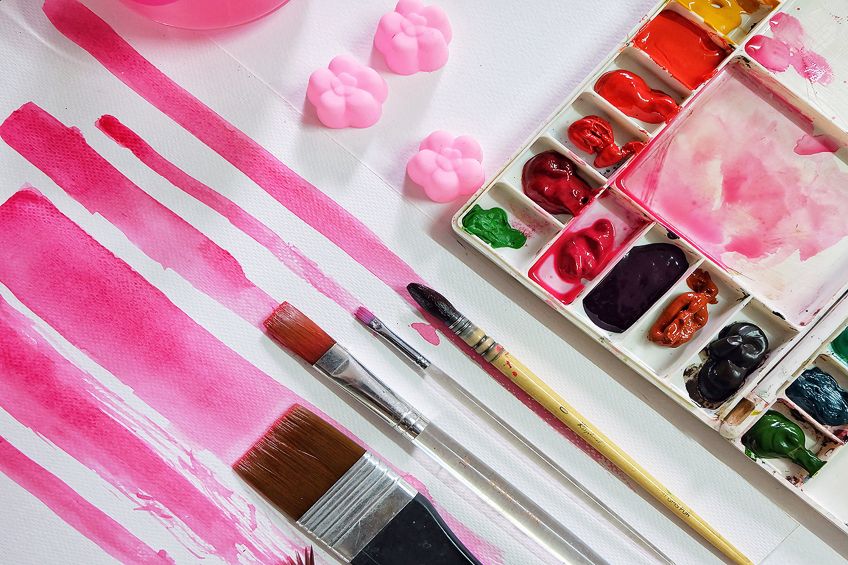
Different Shades of Pink and How They Make Us Feel
It is clear that pink elicits a variety of emotional reactions, but what impression will a particular shade of pink make? Slightly different emotional reactions are created by each unique shade of pink, but there are general rules that are simple to follow when selecting which pink to use for your design.
Shades of pink that are associated with vibrancy, love, and passion include darker shades such as hot pink and magenta. In contrast, the lighter shades of pink are linked with more childlike emotions and sweets, including shades such as pastel pink and baby pink.
Thus, it is essential that you mix the exact shade of pink required to elicit the desired emotions.
What Colors Make Pink?
Now that you have a grasp on the emotions that pink can elicit as well as which shade of pink you would potentially want to work with, the next step is exactly how to make pink. A mixture of white and red creates true pink, but to mix other shades of pink you will be required to adjust your ratios, include other colors like blue and yellow, and use different shades of red.
Firstly, what is your base color for pink? The base color of pink is red. The most influential factor when creating shades of pink is which shade of red you select as your base color. As you will note on the color wheel, red shades range from extremely cool reds to very warm reds – this temperature difference is linked to the color bias.
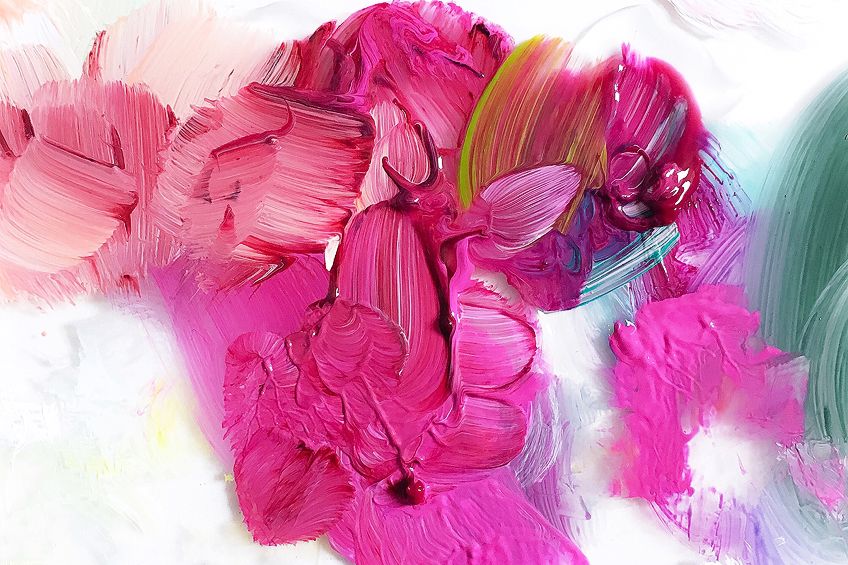
Navigating the Color Bias
The color bias refers to the temperature of the different colors in relation to the other colors on the color wheel. Reds that lean more towards orange are considered warm as they have a little yellow in them. Reds that lean towards purple contain a little bit of blue, making them cooler reds. The level of the warmth of your red will impact the shade of pink.
Warm shades of red include scarlet, Venetian, and cadmium red, all of which produce slightly orange pinks once mixed with white, such as peach and coral. On the other hand, cooler reds such as carnelian, alizarin, vermilion, and crimson red will produce a pink that is closer to purples such as magenta and hot pink. What follows is a list of red shades from cool to warm:
- Magenta
- Alizarin crimson
- Vermilion
- Carnelion red
- Cadmium red
- Venetian red
- Scarlet
- Light red
- Coquelicot red
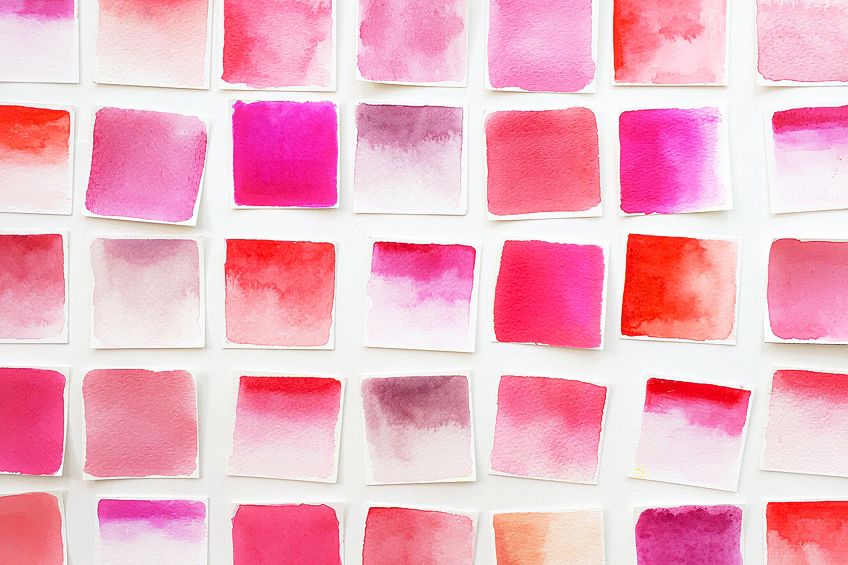
Making Pink Using Different White Shades
Using different shades of white can have just as much impact on the shade of pink you produce as the shade of red you use. Two whites can be used, namely zinc white and titanium white. Zinc white is the more translucent of the two options, while titanium white is much opaquer in comparison.
You will need to experiment in order to determine the different ratios of color you will require to make various shades of pink. Below, we describe a quick and easy exercise that will assist you in experimenting with mixing different shades of pink. For this exercise, you will need a sheet of paper, each of the white shades (if you have both), all the shades of red you have, as well as a small amount of yellow.
- Start by drawing out four squares for each shade of red. Then, paint the first of each square with the relevant red color.
- Add a small amount of zinc white to each of your red shades, and blend the color into the next square. These pink shades will have a translucency to them as zinc white is relatively transparent.
- Now, do the same, except with your titanium white. Mix each shade of red using a little of the titanium white paint this combination onto the next square. While the tone of the pink shade will not differ significantly from the pinks that contain zinc white, they will be a lot opaquer.
Simply by adding a little white, you will note how different each of these shades of pink is. Also, you will see that adding either shade of white may lighten the pink, but it will dull the color instead of brightening it.
How to Make Different Pink Hues
Ideally, you will want to have a pallet with an assortment of hues when you are painting or designing something with a certain color. Once you have made your perfect shade of pink, the next step is to create various hues so as to add dimension and depth. If you were to paint something like a rose, you would require lighter and darker shades of pink hues to create highlights and shadows. You need dimension and depth to create a realistic painting that can be achieved with shadows, tints, and muted shades.
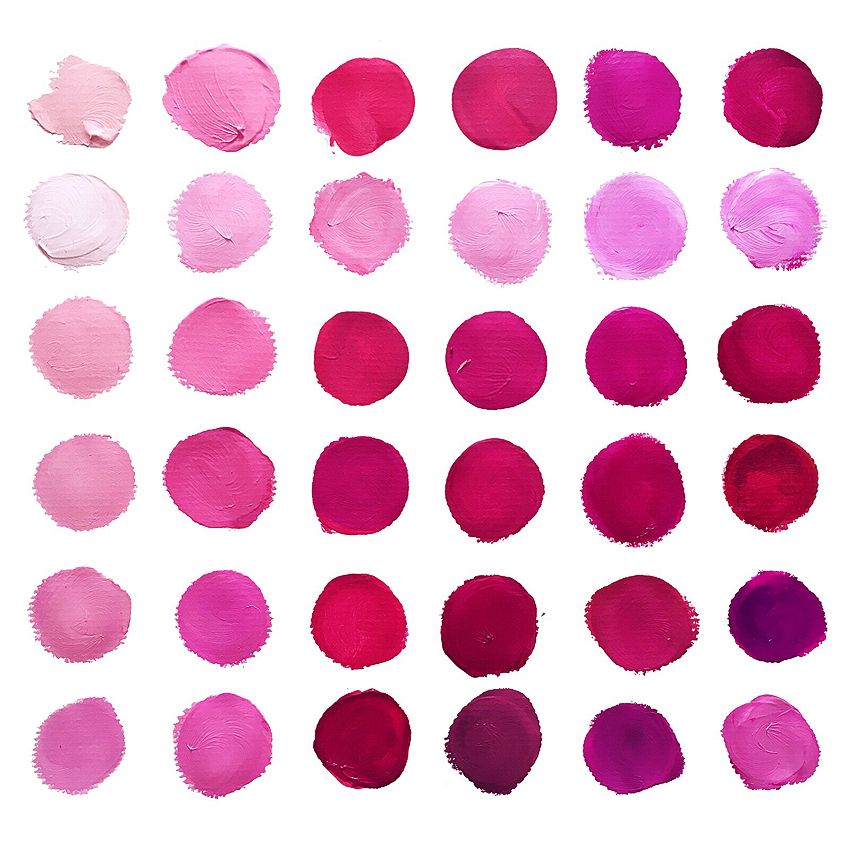
Muting Pink Shades
When painting or working on your design, you might not want to use the brightest pink at all times. Using a small amount of the color’s complement will allow you to mute the original color. Pink’s complementary color is green-yellow, which you can use to mute even the brightest shade of pink. You only need to add small amounts of the complementary color to your pink, as a little goes a long way.
The exact shade of green-yellow you should use will need to be the direct complement of the particular shade of pink. Where every color has a complementary color, so does each shade have its own complementary shade.
To achieve the look you require for muting your pink shade, we simply recommend that you experiment.
How to Make Dark Pink
The simplest way to make your pink darker is to change the ratio of your pink mixture. To darken your pink, you can add a little more of the red hue. Be careful when doing this, however, as just a small amount of red can instantly make your pink a lot darker. If you are looking to create a dark plum pink, you can add a small quantity of either purple or black, but once again, be careful with the amount you add.
How to Make Pink Without White
It may seem that the simple solution to create a lighter pink is to increase the proportion of white you have used in the mixture, but what if you want to make pink without having to use white? You can use something like cadmium lemon yellow, or another light yellow shade in combination with your red to create pink. If you do not mind having to use white to make pink, then you can try combining light yellow and white to create a peachy pink.
When using yellow, the white will not dull your pink color due to the brightness of the yellow. When making this mixture, you will see that the pink you create is closer to more coral and peachy shades. If you use a white-yellow combination, even the hues of red (which have purple tones) will become a little peachier in color. This is a stunning option for you to play around with as you experiment with color bias.
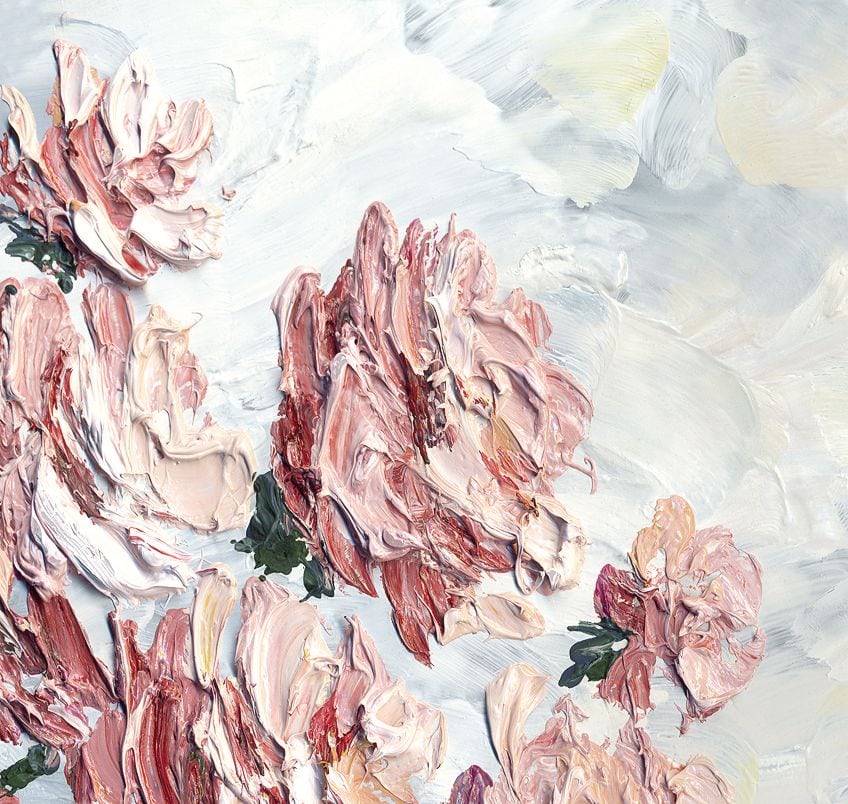
The Scientific Formulation for Different Shades of Pink
There are scientific formulations for creating exact shades of pink such as pastel pink, blush pink, and baby pink, as well as the darker shades of pink. What follows is a table that shows the relevant scientific formulas for mixing a handful of different pink hues so that you can create various shades of pink with ease.
| Type of Pink | Pink Shade | HEX Number | RBG |
| Pastel Pink | #ffd1dc | 255,209,220 | |
| Carnation Pink | #ffa6c9 | 255,166,201 | |
| Neon Pink | #ff6ec7 | 255,110,199 | |
| Barbie Pink | #e0218a | 224,33,138 | |
| Rose Pink | #ff66cc | 255,102,204 | |
| Magenta | #ff00ff | 255,0,255 | |
| Hot Pink | #ff69b4 | 255,105,180 | |
| Coral | #f88379 | 248,131,121 | |
| Salmon Pink | #ff9999 | 255,153,153 | |
| Watermelon | #fc6c85 | 252,108,133 | |
| Peach | #ffe5b4 | 255,229,180 | |
| Fuchsia | #ff77ff | 255,119,255 |
Using Pink in Your Paintings
You are now equipped with the knowledge to create an assortment of pink hues, so you might be looking for suggestions on how to incorporate these colors into your paintings and designs. Pink is used all over, such as in marketing and advertisements due to its eye-catching and bold appearance, which makes it the perfect color to make a statement in your paintings or designs. You can create several different impressions using different hues of pink: Dark pink elicits excitement, love, and passion, while light pink brings on feelings of sweetness and youth.
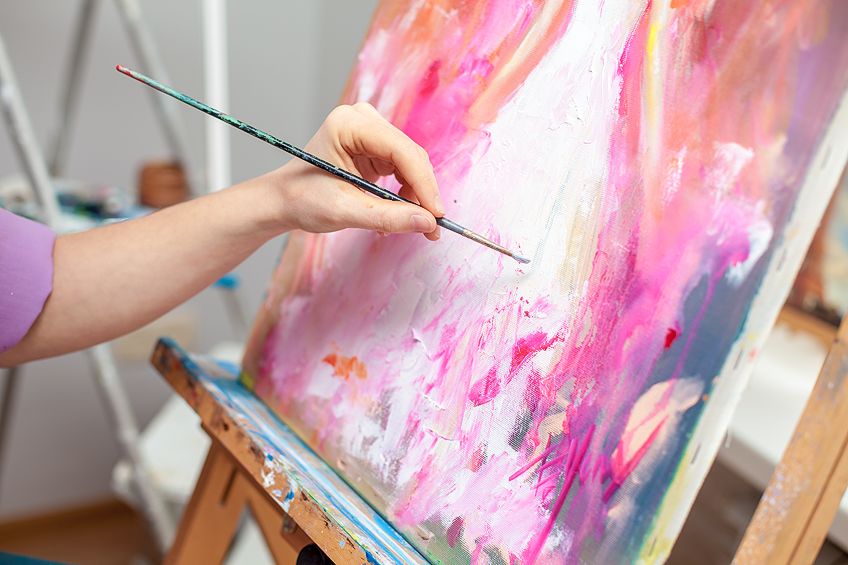
Other Colors to Use With Pink
It is important to remember that a single color does not exist in a vacuum. Thus, it is not often that you will use only the color pink in your design. The colors you use alongside the pink are just as important, as they will have an influence over how the pink is perceived.
You can make your pink more emphatic by using negative space or complementary colors. As a designer or artist, you will need to learn how to use other colors and pink alongside them.
To create a striking design that pops, it is a great idea to use complementary colors as well as other colors alongside the pink You can create a specific idea or certain feeling in your design through the use of pink in conjunction with another color.
Playfulness with Pink
Using pink with red or orange hues can create a playful atmosphere in your drawings or paintings. These three particular colors are analogous, which means that they will not overwhelm one another when placed next to each other in a painting. You will be able to create an assortment of effects using these colors.
When using a bright, hot pink next to a bright, deep red, you will create a bright and vibrant atmosphere. Some people feel that combining hot pink and bright red can be a little clashing and garish, but if the colors are utilized correctly, the combination will result in vibrancy and excitement in your design.
If you wish for something less overwhelming, you can also look at either a yellow shade or a lighter orange next to your pink shade. The combination of orange and pink is not as bold, but it remains full of life and exciting.
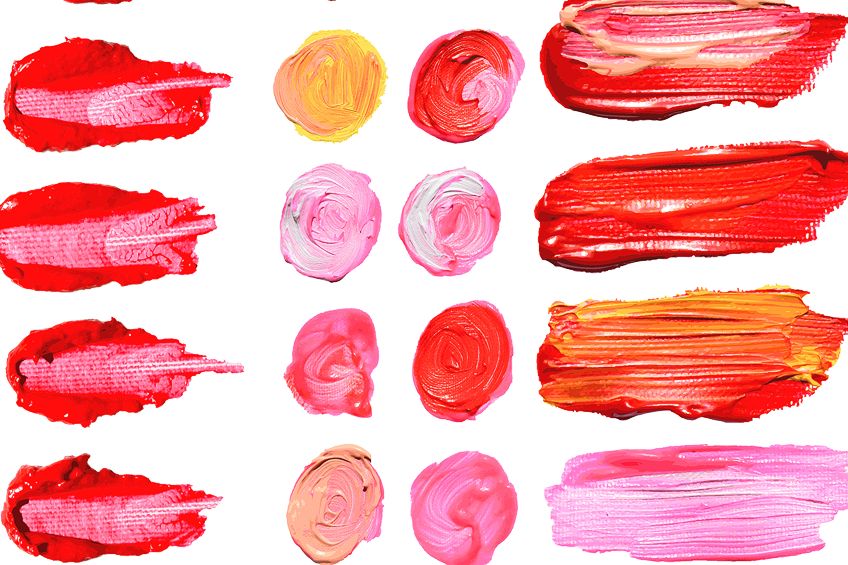
Using Pink with Neutral Colors
We have now addressed dark hues and bright colors, so it is now time to look at neutral shades and how pink interacts with them. If you are hoping to achieve a color scheme that is not too eye-catching or bold with a more elegant color palette overall, then you should use greys and browns which are neutral colors when placed amongst pink hues. This combination will give you a stunning vintage feel while still being modern, as neutral shades blend beautifully with pink hues.
You can lighten your pink hues to achieve a more elegant design as if you were to use pinks shades such as hot pink or Fuchsia pink with your neutral shades you would not achieve a gorgeous balance. The bold and bright shades of pink clash terribly with the neutral shades such as grey and brown. Blush pink or baby pink or any other lighter and softer pink shade will be significantly more effective when combined with neutral shades.
Pink and Contrasting Colors
Pink is known for being playful and bright, and you can enhance its vibrancy even more simply by using a darker, contrasting color alongside it. You will be able to create a bold and interesting look by pairing your pink with a darker contrasting shade. In terms of color theory, dark colors such as blue, black, or dark purple recede into the background, while colors like orange and pink (which are brighter colors) will come forward. Pairing a darker color with a lighter one enhances this effect, resulting in a striking contrast.
A wonderful example is using a border of black around a pink background. The two colors paired next to each other will make the pink surface area appear larger, as if it were coming out of the frame. You can achieve the opposite effect by outlining a black background with pink, where the center of the design would feel as though it were pulling away from you.
The color pink is so much more than just little girls and toys, and there are so many pinks available for you to work with. We hope that this article not only assists you in creating and using your own shades of pink, but also helps you in understanding the vast array of emotions that can be elicited when working with pink.
Frequently Asked Questions
How Do You Mix Pink Paint?
It is quite simple to mix pink paint – you just need some red and some white. The exact pink hue you require can be achieved by mixing different ratios of these two colors. Experimenting is essential and through doing so, you will be able to determine how much of each color you require when you wish to make pink paint.
How to Make Pink?
It is simple to make a pure shade of pink. You just need some white and a stunning bright red. Pure pink is made up of a 1:1 combination of white and red, and you can try different ratios to change the shade of pink. To create darker pink, add a little more red than white, and light pink can be achieved by adding more white than red.
How Many Shades of Pink Are There?
Currently, there are 29,000 different shades of pink known to man, scientifically speaking. So, it can seem overwhelming to determine which shade of pink you require for your design. To create all of these shades, you only need to mix a combination that utilizes purple, red, and yellow hues, and of course white.
Can I Make Pink Without Using White?
This is not the go-to method to create pink, but it can be done. You simply mix red with a little bit of a very light yellow. This will, however, give you a pink that is very peachy.
Larissa Meyer is a 32-year-old mother from Michigan and creative spirit since childhood. Her passion for painting and drawing has led her to an education as an illustrator and a career as a freelance graphic designer. She has a Bachelor of Fine Arts in Illustration and a degree in Graphic Design. Larissa is a talented artist who is able to master a wide range of styles and techniques to bring her artistic vision to life. Her greatest passion is currently fluid painting and epoxy resin art. Larissa’s love for art and her knowledge and experience in illustration make her the perfect Creative Director for our fluid-painting.com team. She is the creative head of our team and shares her passion and knowledge with our community through articles and tutorials.
As a mother of a 2-year-old daughter, Larissa also understands the importance of fostering creativity in early childhood. She uses her experience and knowledge to help other parents inspire their children and develop their artistic skills as well.
Learn more about Larissa Meyer and about us.

